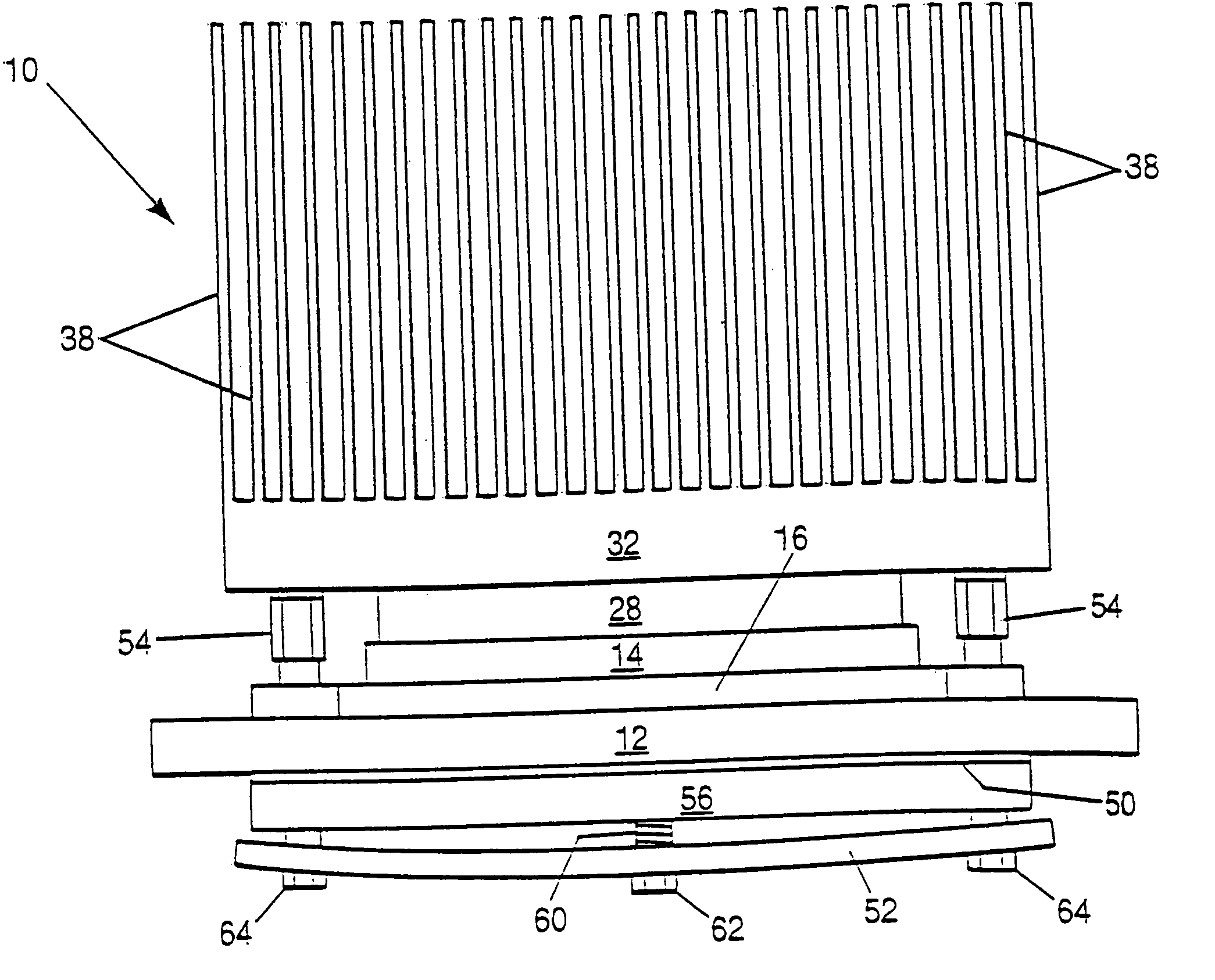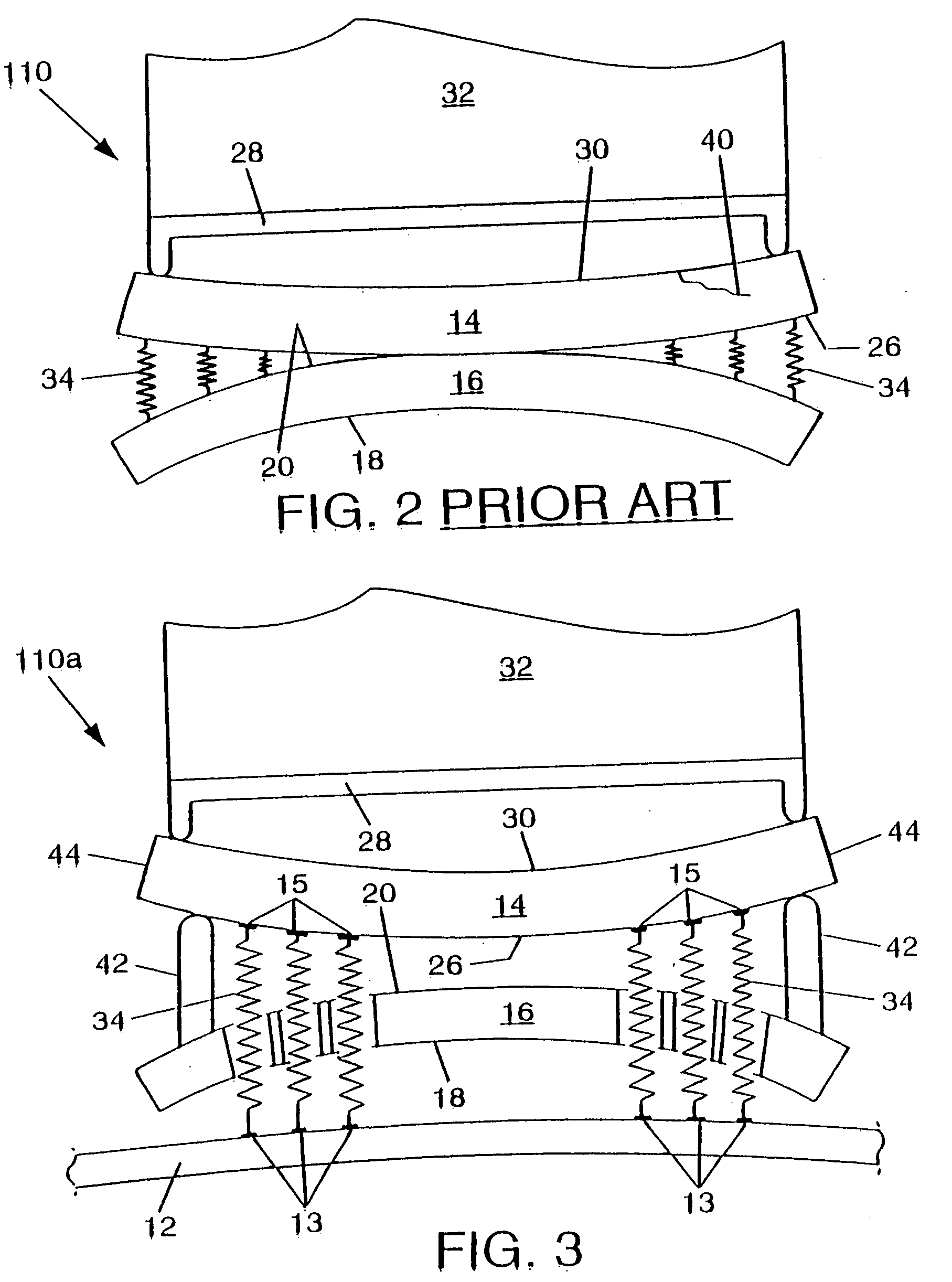Structure for controlled shock and vibration of electrical interconnects
a technology of electrical interconnections and structures, applied in the direction of coupling device connections, coupling protective earth/shielding arrangements, semiconductor/solid-state device details, etc., can solve the problems of reducing reliability and life expectancy, and affecting the stability of electrical interconnections. , to achieve the effect of reducing the contact motion, minimizing electrical resistance problems and mechanical failures
- Summary
- Abstract
- Description
- Claims
- Application Information
AI Technical Summary
Benefits of technology
Problems solved by technology
Method used
Image
Examples
Embodiment Construction
[0040] Referring now to the drawings, and particularly to FIG. 1, an electronic circuit board assembly 10 is shown. The electronic assembly 10 comprises a printed circuit board 12 of standard construction typically composed of multiple circuitized conductive layers interleaved with layers of high dielectric material (these various layers not being shown) in the form of a laminate. One side of the board is backed with an insulator 50 and a stiffener 56. A spring plate 52 is mounted on posts 54 and includes a screw 60 that urges the stiffener against the insulator and the PCB 12, thereby serving to maintain the planarity of the PCB. The screw typically includes an Allen head 62 which is turned with an Allen-head wrench. Turning the screw 60 in one direction increases the spacing between the middle of the spring plate and the stiffener, thereby increasing the pressure exerted by the spring plate on the stiffener at the posts 54. Turning the screw 60 the other way decreases this spacing...
PUM
| Property | Measurement | Unit |
|---|---|---|
| flatness | aaaaa | aaaaa |
| flatness | aaaaa | aaaaa |
| angles | aaaaa | aaaaa |
Abstract
Description
Claims
Application Information
 Login to View More
Login to View More - R&D
- Intellectual Property
- Life Sciences
- Materials
- Tech Scout
- Unparalleled Data Quality
- Higher Quality Content
- 60% Fewer Hallucinations
Browse by: Latest US Patents, China's latest patents, Technical Efficacy Thesaurus, Application Domain, Technology Topic, Popular Technical Reports.
© 2025 PatSnap. All rights reserved.Legal|Privacy policy|Modern Slavery Act Transparency Statement|Sitemap|About US| Contact US: help@patsnap.com



